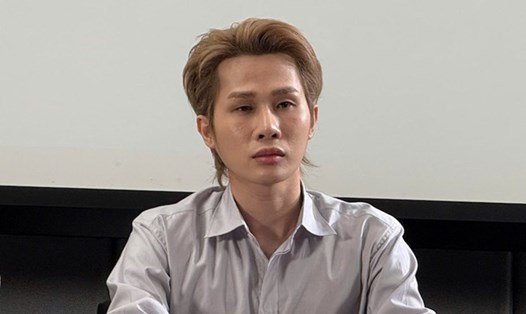When real - fake is just one click away
Many artists admit that for many years they have chosen to remain silent in the face of rumors or thrilling content, because they believe that the audience is alert enough. However, the rapid development of AI technology (artificial intelligence) has caused the situation to become uncontrolled. It is that silence that unintentionally creates space for bad guys to use artist images to cut and paste, deepfake (fake images, fake voices) and attach to products of unknown origin.
Faced with this situation, many Vietnamese artists have been forced to speak up to "call for help". Ho Ngoc Ha - who has just been impersonated by a series of AI videos - said: "This cry for help is from an artist who is facing the image of being exploited for advertisements that he does not know where they come from".
Actress Thanh Huong also said that the situation of AI being exploited is making the artists truly confused. She witnessed many colleagues becoming victims: They took artist images, combined voices, and created promotional clips that artists did not know about. That directly affects our reputation and work.
Miss Ngoc Han was also taken with a photo of her ao dai and personal design to combine with a counterfeit advertisement: "I have repeatedly submitted complaints to Facebook to handle the violating account".
A series of other artists have also become victims of fake AI. Actor Truong The Vinh warned that his image was forged to lure people to toxic links. Artist Hong Dao was set up with dozens of fanpages claiming to sell weight loss drugs. Actor Quoc Truong was created by AI to advertise gambling and black credit. A series of Vietnamese stars such as My Tam, Son Tung, Ngo Thanh Van, BTV Hoai Anh, Mac Van Khoa... simultaneously spoke out because they were impersonated by AI.
Solutions from a professional perspective
Regarding the problem of AI impersonating celebrities, actor - Major Dao Thanh Mai emphasized: "Always stay calm and alert to any information to carefully consider before deciding whether to believe, follow or invest. Those who are influential and have been affected by fake AI must proactively speak up and report to the authorities to protect their rights, while warning the community to avoid taking advantage".
Lawyer Le Ngoc Tu (royal Law Firm) said: In cases of forgery and dissemination of forged images, the creator and distributor of the forged content must bear the main responsibility.
According to Article 32 of the 2015 Civil Code, individuals have the right to their own image, and the use of the image (including the fake image) without consent can be considered a violation of human rights, leading to the responsibility for compensation for damages (civil). If the forgery is for the purpose of selling goods, fraud or causing damage to honor, it can be prosecuted under provisions such as Article 288 of the Penal Code ( Taking advantage of democratic freedoms to infringe upon the interests of the State, the legitimate rights and interests of organizations and individuals) or Article 174 (fraudulent appropriation of property) if related to blackmail and fraud. For example, if someone uses AI to fake voices or artist images to advertise products without permission, they can be sued for compensation and even prosecuted if they cause great damage.











